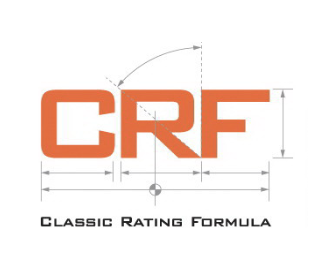By Jim Taylor, CYOA Technical Committee Chair
Each year, the CYOA Technical Committee does an in depth review of the Classic racing held during the season just completed. Issues such as participation trends, race management and class assignments are all of interest to the group, but an especially close look is always taken at whether or not CRF ratings accurately reflect actual on-the-water performance. The obvious goal is to equitably rate a full range of boat sizes and types over a variety of conditions, and while this is a tall order given the diversity of the Classic fleet, during the 2022 season the racing was good and the ratings seemed reasonably fair. As evidence of this, similarly focused teams like Dorade, (iconic 1929 S&S 52), Leaf (1944 Luders 24), Marilee (1926 Herreshoff NY 40), Blackfish (2017 49 ft SOT), Siren (1936 S&S NY32), and Bijou II (1937 Reimers 30 sq metre) seemed to be very closely matched on the race course despite being radically different in size, age, and general characteristics. Still, there is always room for improvement, and performance vs rating takeaways from the 2022 season included the following:
- Race-oriented boats with high stability (eg 12m’s) continued to be advantaged
- Boats with high Disp/Length ratios (e.g. CCA and Universal Rule boats) appeared disadvantaged
- Boats with low SA/Disp ratios (again CCA and Universal Rule boats) appeared disadvantaged
- Boats with deep rated draft (especially via ctbrd extension) appeared disadvantaged
- Square head mains faced ‘double jeopardy’ with both 1.15 rig factor applied AND main girths assessed
Given that each of these characteristics is directly addressed by CRF 2022, it might seem easy to make suitable adjustments to them for CRF 2023, but it most decidedly is not. In fact, it is extremely difficult to make a change to the rating formulae and/or factors in one area that doesn’t result in unintended consequences in another that might upset the current competitive balance across the fleet. With this in mind, year-to-year changes to CRF have been made only after checking their effect on an internal ‘test fleet’ that represents the full range of boat sizes, types, ages, and characteristics that are currently racing. These test fleet checks are done for each possible change individually, and for their combined effect. The end result of this painstaking process is the following list of changes for CRF 2023:
- The Stability Correction is increased for boats with high stability, but unchanged for boat with low stability. This change by itself would speed up the ratings of 12m’s by as much as 6 sec/mi, but other changes reduce the net effect for them to about 3 sec/mi faster.
- The power of the Displacement/Length Factor (DLF) is increased for boats that are heavy for their length. This change slows up the ratings of heavier Vintage and Classic boats by 2-3 sec/mi, but leaves the ratings of lighter, more performance oriented boats unchanged.
- The power of the Sail Area/Displacement Factor (SaDF) is increased for boats that carry relatively less sail area for their displacement. Here again the ratings of heavier Vintage and Classic cruisers are slowed up by 2-3 sec/mi, while the ratings of lighter, more ‘powered up’ boats are unchanged.
- The Draft Correction (DC) has been reduced for boats whose Rated Draft (RD) is deeper than their Base Draft (BD). This slightly slows up the ratings of some boats with unusually deep fixed keels, but the difference can be considerably larger for boats with deep centerboards, and as much as 6 sec/mi slower for a few.
- CRF has been requiring data declarations for mainsail girths for several years in order to address the additional drive force generated by mainsails with aggressive (and previously unmeasured) roach profiles. CRF 2022 began to base rating on the average of main areas calculated with and without girths in order to smooth the transition. For CRF 2023 rating is based on the full value of ‘with girth’ calculated areas instead of on the average. The result is that the ratings for a few boats with aggressive roach profiles are sped up slightly, while the ratings of some older boats with straighter leeches are slowed down by 2-3 sec/mi. (Word to the wise: If you have a main with little or no roach, it would likely be to your advantage to declare your mainsail girths!)
- The CRF 2023 assessment of mainsail roach profiles outlined above produces mainsail calculated areas that are very close to those of the actual ‘flying cloth’ even for those with very aggressive roach profiles, so the Rig Factor for ‘square head’ mains is significantly reduced for 2023.
- CRF has been requiring data declarations for spinnaker mid widths for new chutes several years. As with mainsail girths, CRF 2022 began to base rating on the average of spinnaker areas modeld with and without mid widths to lessen the risk of any competitive disruption, but that did not occur, so CRF 2023 will base rating on the full value of the modeled areas. The result is that ratings for a few boats with unusually large spinnaker mid widths will be sped up by 2-3 sec/mi. (NB that to avoid any temptation for teams to optimize rating via unusually small spinnaker areas, there is no rating ‘credit’ given for spinnaker mid girths smaller than a default value).
- Since the inception of ‘new’ CRF in 2017, a Spar Material Factor (SMF) has recognized that different spar materials (wood, aluminum and carbon) have an impact on performance potential. The fact that some savvy owners have considered scrapping their aluminum masts and going to the trouble and expense of building a wooden replacement suggested that the rating delta between wooden and aluminum spars should be revisited. For 2023, the SMF for aluminum is reduced, and that for wood was increased, so that the ‘gap’ between the two is reduced by what is typically about 2-3 sec/mi.
The change in rating from all of the changes outlined above taken together is about 2-3 sec/mi slower for typical Vintage and Classic boats, including fleet benchmarks like Dorade and Marilee. Since the CRF 2023 ratings for 12m’s are typically 3 sec/mi faster, the net difference between those two types is on the order of 5-6 sec/ mi. Older, heavier, underpowered cruisers like Concordia’s are slowed up by slightly more (5-5 sec/mi) and those CCA types with deep centerboards by considerably more (6-8 sec/mi). Other notable differences resulting from CRF 2023 ratings show Gamecock (older, heavier, lower sail area, smaller main girths) slowed up relative to both Leaf and Bijou II by a net of about 6 sec/mi, and SoT boats generally sped up by 1-2 sec/mi.
In addition to providing more equitable handicapping, one of the CYOA’s primary objectives in 2017 for a revamped CRF was that it be fully transparent, as the human ‘thumb on the rating scale’ represented by ‘Adjustments to Base Rating’ in old CRF had proven unpopular and problematic. As a result, all of the formulae and factors used to generate CRF ratings are published on line, as are all the certificates that it produces. It is an open book, ‘data in - ratings out’ system that has worked well since its inception, and should work even better during the 2023 season.









